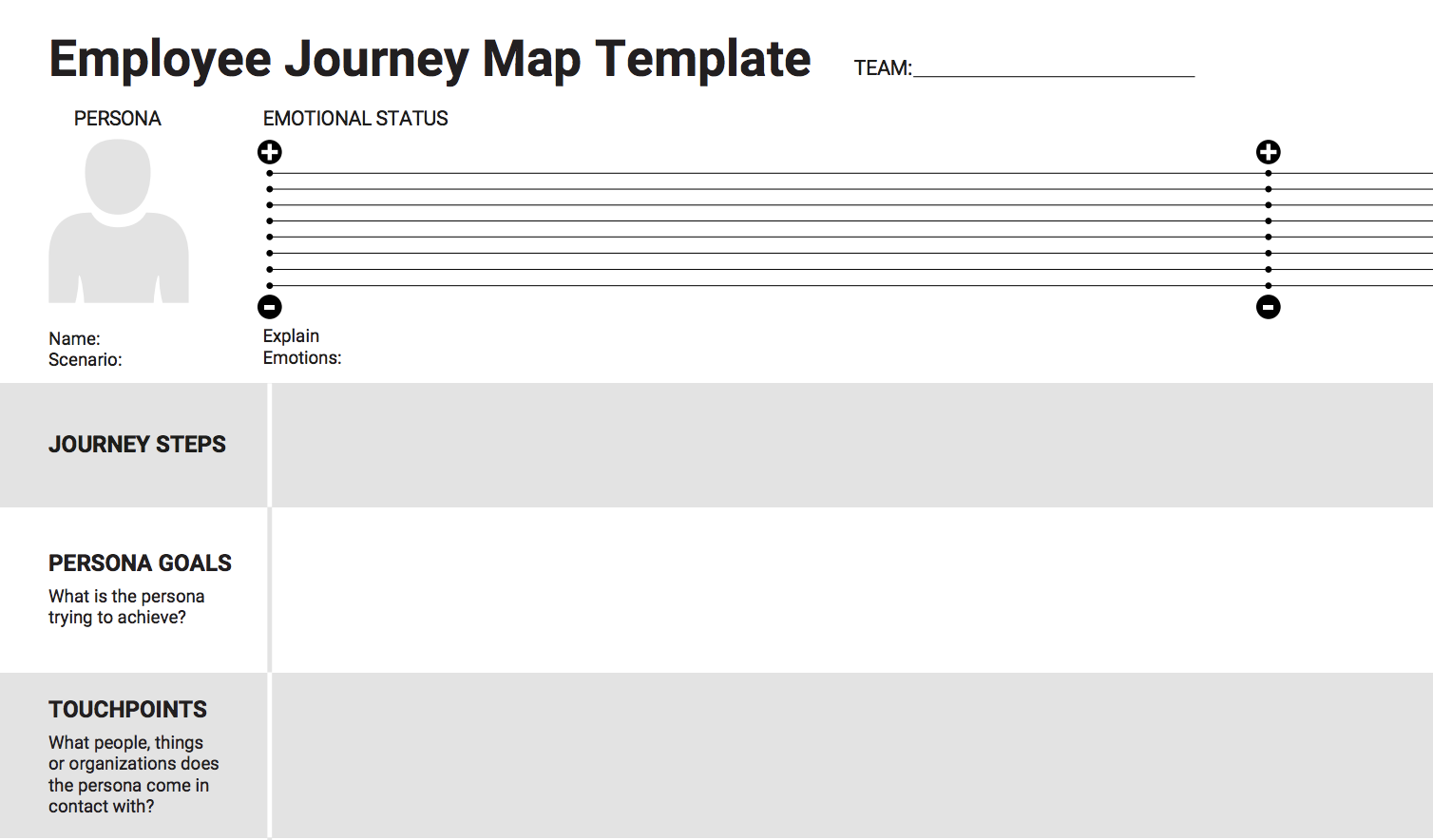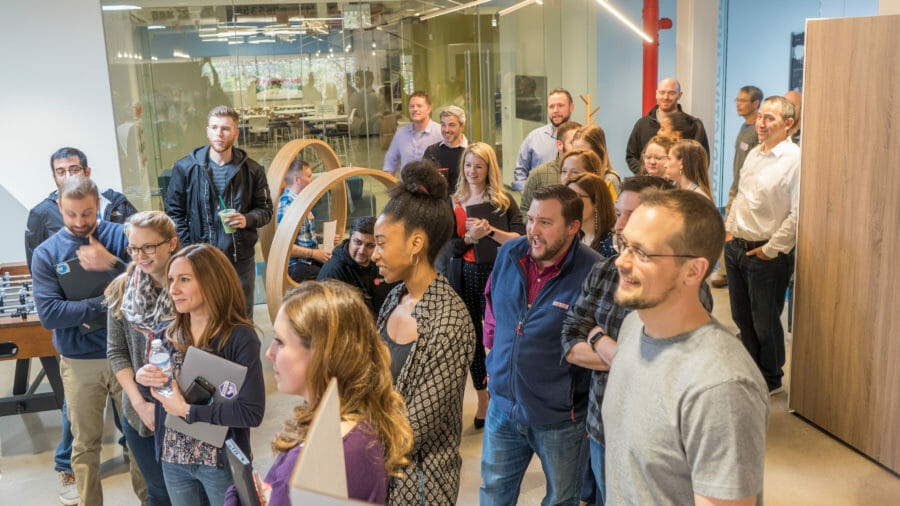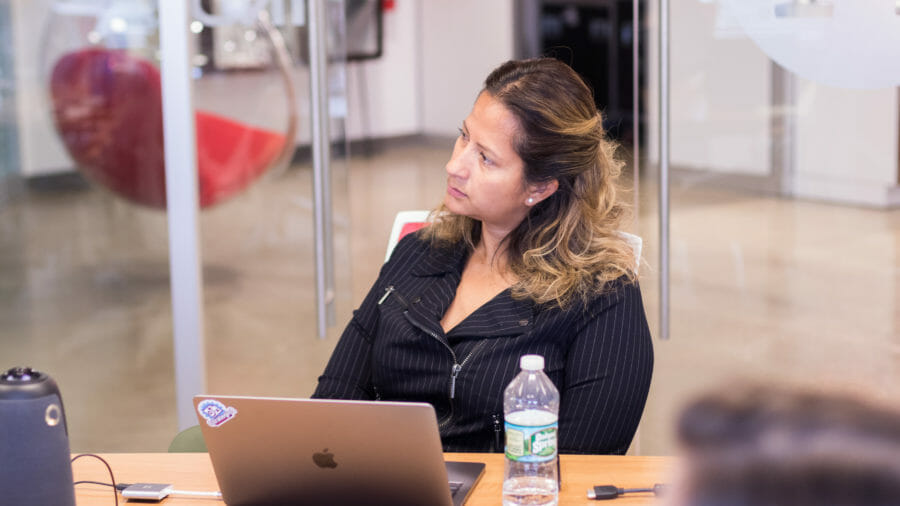Today you’ll learn about designing an employee journey map at your company. Whether you’re struggling with top-performer turnover or looking to boost engagement, this post’s for you.
In it, you’ll find links to download:
- The employee journey mapping toolkit
- An employee persona template
- An employee journey map template
Let’s begin by reviewing the basics.
What is the employee journey?
Collectively, the employee journey is everything workers experience and feel during their tenure at a company. Employee journey mapping is the visual representation of this experience.

The concept of mapping the employee journey may be relatively new. But companies have been customer-journey mapping for a long time. There are lessons HR teams can learn from that.
Why employee journey mapping is worth it
When you understand how employees react emotionally to different moments, you can maximize the moments that improve employee engagement and minimize those that cause disengagement. This generates a positive employee experience. And there’s real business value in it. Here’s why:
Employees who are emotionally satisfied with their experience at work will be engaged. Engaged employees give discretionary effort. They’re generally more productive than their disengaged peers. When the lion’s share of employees give discretionary effort, companies see increased profits and lower turnover.
According to the 2020 Talent Optimization Report, the turnover rate of high-performing employees is 47%. This exercise uncovers which levers you can pull—at the moments that matter—to boost engagement.
> Download the employee journey mapping toolkit.
How to design an employee journey map in 4 steps
With the business value clear, let’s move on to actionable advice.
1. Get in the right mindset.
When doing this exercise, think of yourself as a facilitator or a process expert. Don’t think of yourself as a subject matter expert. Don’t identify pain points and areas for improvement alone. This activity centers around collaboration and listening. Encourage perspectives from others at various levels and functions. Include a mix of Reference Profiles. Get to know everyone’s needs and perspectives, and don’t assume to know it all. The answers will emerge.
2. Develop employee personas.
Identify all your key employee personas. Again, take a page from marketing and consider how they develop customer personas. It’s all about getting inside someone else’s head to understand their needs and drivers.
Name each persona (e.g., Marcy the Marketing Manager) and fill in details like age, location, job profile, motivations, and workplace behaviors.
> Download the employee persona template.

3. Map the employee journey.
After you’ve completed your employee personas, take each one through the journey mapping exercise. This is where you create a visual representation of the employee experience.
It’s important to map the actual journey, warts and all—not the dream state you wish each employee experienced. Truly listen to what others on the team are telling you, even if it hurts. It can be useful to administer an employee engagement survey to collect quantitative data regarding how different individuals and teams are experiencing your company. As this data is anonymous, you might uncover truths you need to hear, but that others are scared to tell you.
In addition to mapping out key moments each employee persona experiences, you’ll also need to chart their emotional status along the way. Maybe “Marcy the Marketing Manager” experienced a smooth onboarding process but a horrible cross-functional key initiative. Based on those interactions, you can identify a need to make a change.
> Download the employee journey map template.
4. Take action.
Now that you know what’s working and what isn’t, take action to enhance a certain journey step or to remove a barrier. There may be a big push to overhaul the key initiative process. Or maybe you’ll make an effort to add more “High B” employees to cross-functional teams to ensure effective communication.
Ask your stakeholder team questions to help you prioritize actions. What are the biggest opportunities to make a positive impact? What low-hanging fruit can we grab right away?
Transform your company from the ground up.
Employee journey mapping is critical to understanding how your employees are experiencing their journey within your company. With that insight, you can take action to improve the experience, thus transforming your company from the ground up.


